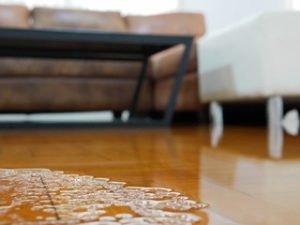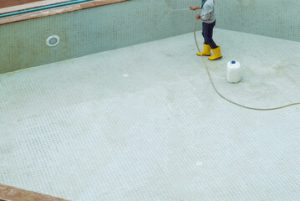Extensive water damage requires extensive restoration efforts, including structural repairs and replacement of irreparable items. Moreover, postponing these repairs increases the cost of remediation and may lead to permanent property loss.

Mold grows quickly in damp conditions and poses a serious health threat, especially for individuals with respiratory issues like asthma. Touch walls and floors to see if they feel soft or spongy, as this indicates recent water damage. Visit https://www.allproutah.com/ to learn more.
Whether it’s a devastating flood or an inconvenient leak, water damage can be catastrophic for your most important papers. From birth and death certificates to legal contracts and family photographs, irreplaceable documents can be destroyed by water. If your important papers are damaged by water, it is crucial to take immediate action and enlist the help of professional contents restoration specialists to minimize long-term damage.
Identifying the extent of your water damage is an important first step in saving your irreplaceable documents. Wet paper is brittle, fragile, and prone to tearing and smudging. Luckily, even heavily damaged and permanently stained papers can be restored using advanced drying techniques.
If possible, try to prevent the spread of water damage from one room to another. To do this, use fans to improve circulation and blot away excess moisture with towels. You should also try to prevent the formation of mold, as it thrives in moist environments and can cause irreparable damage to papers.
Once you’ve identified the extent of your water damage, begin by separating out any documents that have not been damaged by mold. Separating wet documents will allow them to dry at different rates, reducing the risk of tearing or stickiness. After that, prioritize your documents based on their importance to you. Once a document has been separated, it’s important to handle them gently to reduce the risk of tearing.
After separating your documents, place them in a plastic storage bin or sealed bag to provide an extra layer of protection and reduce the risk of further deterioration. The best option is to keep your important documents and photos in waterproof containers or safes if possible. This will give them an additional layer of protection in the event that they are exposed to water due to a burst pipe or severe flooding. If possible, store your important documents on higher shelves or in elevated storage solutions, like crates and pallets, to further reduce the chance of them being exposed to water.
Another good way to protect your important documents and photographs from water damage is to make digital backups. By scanning and storing these documents on a secure cloud storage system, you’ll have a digital copy that can be saved in the event that your physical copies are compromised by water or another disaster.
Sentimental Items
Sentimental items such as family heirlooms, photographs, and old letters are particularly susceptible to water damage. These items not only carry a monetary value, but often have sentimental and emotional significance that cannot be replaced. Furthermore, electronic devices such as computers, televisions, and phones are especially vulnerable to moisture damage, resulting in costly repairs or even irreparable destruction.
While many of these items can be salvaged, it is important to address water damage promptly. Delaying mitigation efforts can exacerbate damage, and it may also lead to the development of mold and mildew, which can further ruin items and pose health hazards for homeowners and their families. Additionally, if water is allowed to penetrate electrical wiring or outlets, it can cause fires and create potential safety hazards for homeowners.
When sorting through items, it is essential to prioritize sentimental heirlooms and valuable items over those that are simply utilitarian. For example, a shirt from your high school team may feel sentimental to you because of the memories attached to it, but if it doesn’t have any practical use, it can be discarded.
Photographs and books are also highly susceptible to moisture damage, which can wreak havoc on their appearance and integrity. Exposure to moisture can cause ink to bleed, pages to stick together, and the material to warp or break apart altogether. These materials are easily salvageable, however, by addressing the issue promptly and taking steps to ensure proper storage and protection in the future.
It is also a good idea to consider the impact that water damage can have on sentimental heirlooms and valuables, such as antiques and artwork, which can be severely damaged by the presence of moisture. The moisture can tarnish precious metals, warp delicate frames, and ruin the beauty or functionality of these pieces.
When sorting through sentimental items, it is important to be honest with yourself about the reason why you’re keeping them. If you keep something because it would be rude or mean to discard it, or if it brings up guilt or other negative emotions, then it’s time to get rid of it.
Furniture & Upholstery
When furniture and upholstery are exposed to water damage, it can cause irreparable harm. Wooden furniture can swell and lose its structural integrity, while upholstered furniture can absorb contaminants that can lead to staining, odors, and mold growth. Water-damaged items are more likely to require expensive repairs or replacements than undamaged ones. In addition, if these items are valuable or sentimental, they can be a significant loss to the homeowner.
Furniture and upholstery are among the most common objects to experience water damage. Ignoring the signs of water damage can result in significant deterioration and costly repair or replacement costs. To prevent this, homeowners can take several steps to protect their furniture from water damage. They can apply waterproof sealants to wooden surfaces, or use heavy-duty plastic and/or canvas covers to cover entire pieces of furniture. They can also elevate and move items to a safer location (e.g., on cinder blocks) to keep them above flood waters.
In the case of metal furniture, it is important to note that it may rust if left unattended. This is due to the fact that most metals are highly reactive to moisture, which can corrode the metal finish and cause lasting damage to the furniture. Fortunately, the metal can be restored with a vinegar solution.
To address water damage to upholstered furniture, it is recommended to blot the affected areas with clean towels to remove excess moisture. Avoid rubbing, as this can spread the water deeper into the fabric fibers. To speed up the drying process, it is best to place the furniture in a well-ventilated area and utilize fans or dehumidifiers.
If a piece of upholstered furniture is heavily soaked with water, it may be necessary to dispose of the item, or to hire professional upholstery cleaning services to restore it. However, if the upholstery is not too old and the fabric is not torn, it is often possible to salvage the furniture by following appropriate restoration techniques.
Electronics & Appliances
When it comes to electronics, water and electricity are a dangerous combination. Even a little moisture can lead to corroded metal parts, circuit boards, and other critical components that may then short-circuit or break. This is why it’s essential to call in a professional for water damage repair as soon as possible after an incident of flood or leak. In addition to helping to protect your valuable devices and furniture, prompt water damage repairs can also help ensure the safety of you and your loved ones.
If you suspect your electronic device has experienced water damage, the first thing you should do is unplug it. This will minimize the chances that current is still running through it, which could exacerbate any problems and potentially endanger your life. It’s also a good idea to remove the battery and allow the device to dry for a few days before trying to use it again.
In the case of appliances, such as washing machines, refrigerators, and dishwashers, it’s important to avoid turning them on once they’re wet. If you try to turn on a washing machine that has experienced flooding, for example, the motor can become damaged and may burn out. Instead, you should call a professional for an assessment of the damage.
While the immediate impact of water damage might be a loss of belongings and structural integrity, there are hidden consequences that can have lasting effects on your health and well-being. For instance, exposure to mold can trigger respiratory issues in people with allergies and asthma. It can also cause itchy eyes, sneezing, and itching of the skin.
Furthermore, water damage can wreak havoc on your home’s electrical system, posing a significant fire risk if left untreated. This is because a little water can reach outlets, junction boxes, and wiring inside walls, causing corrosion that may ultimately disrupt connections and create heat. This often goes unnoticed, until faulty outlets start burning out or you begin to experience unexplained electrical failures. If you think your home’s electrical system might have been affected by water damage, it’s vital to book an emergency electrician immediately.


